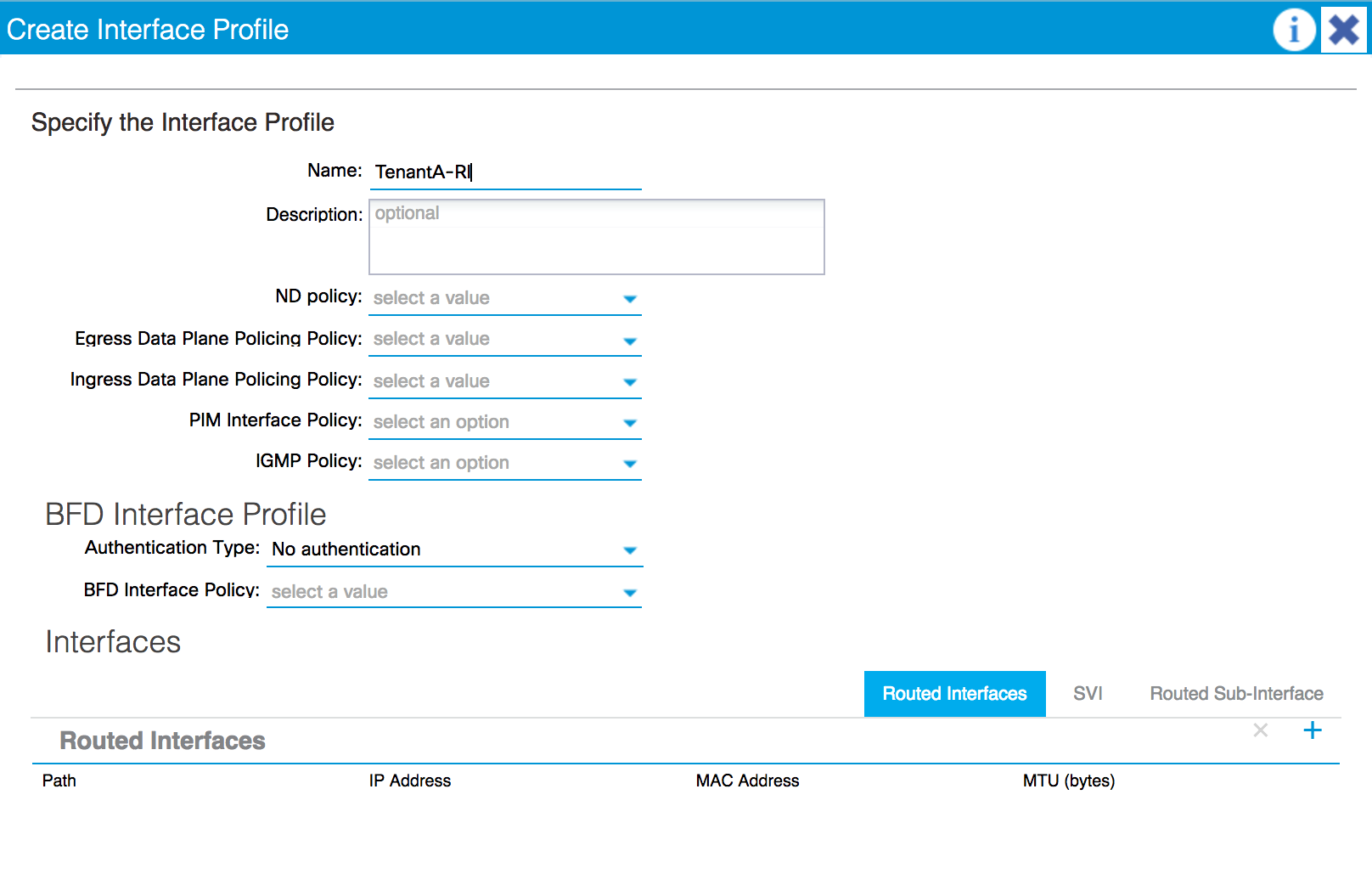We can create three types of interfaces for routing; they are:
- Routed interfaces
- SVIs
- Routed sub-interfaces
We will create one of each!
First, we will create routed interfaces, which are physical interfaces that have an IP address.
- Navigate to
TenantA|Networking|External Routed Networks|TenantA-Routed. - Expand
Logical Node Profiles.
- Expand
TenantA-Node-Profile. - Right-click on
Logical Interface Profiles. - Select
Create Interface Profile.

- Name the interface profile and select the interface type (Routed Interface).

- Click the plus sign to open
Select Routed Interface. - Select the desired leaf node and interface from the drop-down. This interface would connect to another device, such as a switch or router, with which it would form the BGP peering.

- Set the
IP address(I have chosen10.2.20.1/24). - Set the peer-specific
BGP Peer Connectivity Profiles. - Click on
SUBMIT.



